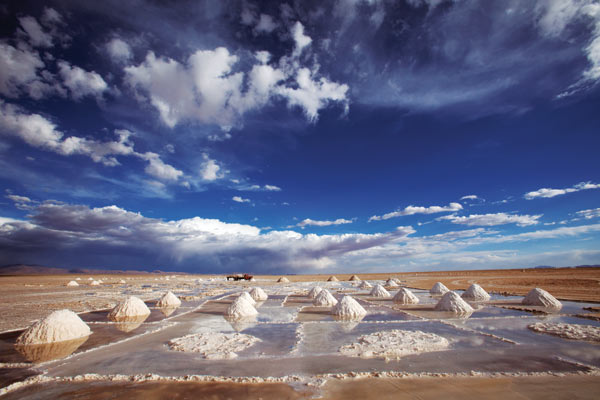Sustainable Energy
The Lithium Rush
In the Bolivian Andes lies a vast salt flat that may shape the future of transportation.

Nearly four kilometers above sea level in the Bolivian Andes lies the Salar de Uyuni, the world’s largest salt flat. But there is more to this surreal, moonlike landscape than meets the eye. Flowing in salt-water channels beneath the surface is the world’s largest supply of lithium–and, possibly, the future of transportation. Lithium is the key ingredient in the lithium-ion batteries that will power the electric vehicles that will soon be rolling off production lines worldwide. Demand for the metal is expected to double in the next 10 years, and Bolivia, with an untapped resource estimated at nine million tons by the U.S. Geological Survey, is being called a potential “Saudi Arabia of lithium.”
The 10,000-square-kilometer Uyuni salt flat (salar in Spanish) extends to the horizon in all directions. These days it’s a breeding ground for pink flamingos and a draw for curious tourists, but in prehistoric times it was once an immense lake. Water falling in the Andes still flows here, and as it works its way over volcanic rocks toward the salar, it picks up minerals, including magnesium and lithium. Baked by the sun, the water becomes a mineral-rich brine that flows under the salt desert’s crusty surface.
The 10,000-square-kilometer Uyuni salt flat (salar in Spanish) extends to the horizon in all directions. These days it’s a breeding ground for pink flamingos and a draw for curious tourists, but in prehistoric times it was once an immense lake. Water falling in the Andes still flows here, and as it works its way over volcanic rocks toward the salar, it picks up minerals, including magnesium and lithium. Baked by the sun, the water becomes a mineral-rich brine that flows under the salt desert’s crusty surface.
